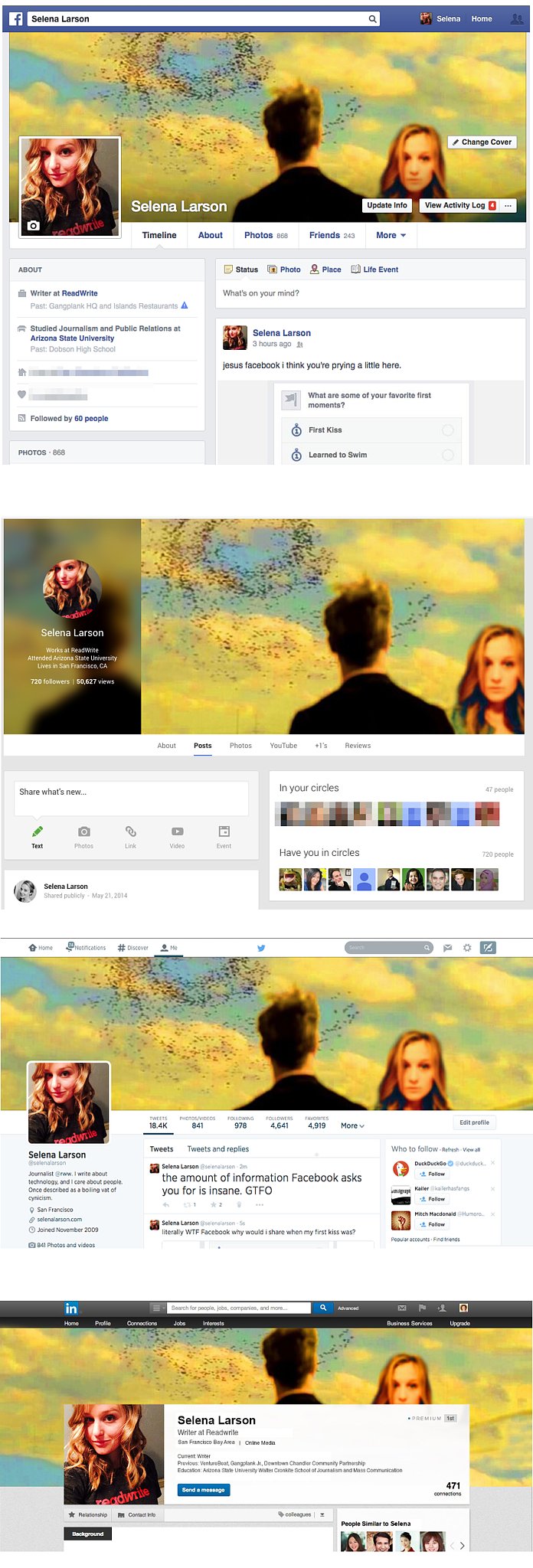The Unbearable Sameness of Social Networks
We proudly present this article from our partners at ReadWrite.
By Selena Larson
:upscale()/2013/06/07/749/n/1922507/41caa8764ea34719_readwrite.jpg)
When Facebook rolled out cover photos in 2011, it was a big deal. It was part of the Timeline redesign, the biggest shift in how people used Facebook in years. The large image at the top of your profile was an opportunity to show off something more than your headshot, giving friends (and also strangers) greater insight into your life.
:upscale()/2014/06/06/991/n/1922507/6f71445d53a4f788_8464661409_4efdfbeae4_o.jpg)
Then, Google got on board, and embraced massive cover photos on its Google+ social platform in 2013. While Google's profile image is different from Facebook's — it's a circle, not a square — the similarities were obvious.
Earlier this year, Twitter took the cover page out of Facebook's playbook and rolled out their own design, one that looks, remarkably (or not) like Facebook.
Now even LinkedIn — notoriously the anti-Facebook — will look like Facebook. Today the company announced users will soon be able to add background images to their profile pages to, as one spokeswoman said, "help members stand out."
What doesn't stand out? The individuality of these social networks.
Now that social networks — professional or otherwise — are beginning to look all alike, the already muddied question of which social network to use for what purpose is even less clear. Can I now connect with my friends on LinkedIn? Do I post baby photos on Twitter? What is Google+ for?
To illustrate just how similar all these social networks have become, take a look at the screen caps of social media profiles below.
 Source: ReadWrite
Source: ReadWrite
Related Links
How Many Women Has Apple Put on the WWDC Keynote Stage Since 2007?
In a Change From the Steve Jobs Era, Apple Is Listening
5 Travel Hacks to Save Time, Money, and Sanity on Your Next Flight
The Era of the Check-In Is Over, and Foursquare Is Moving On
Google to World: Encrypted Email Is the New Black